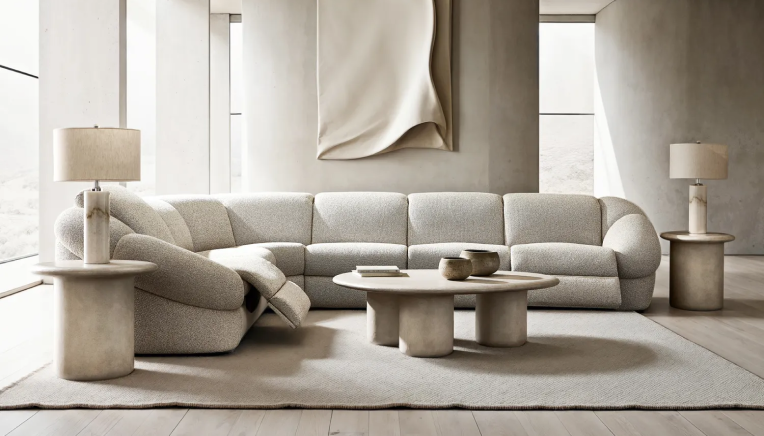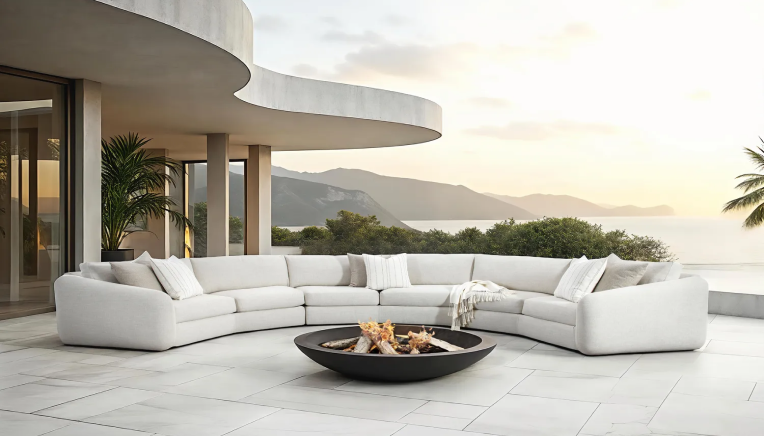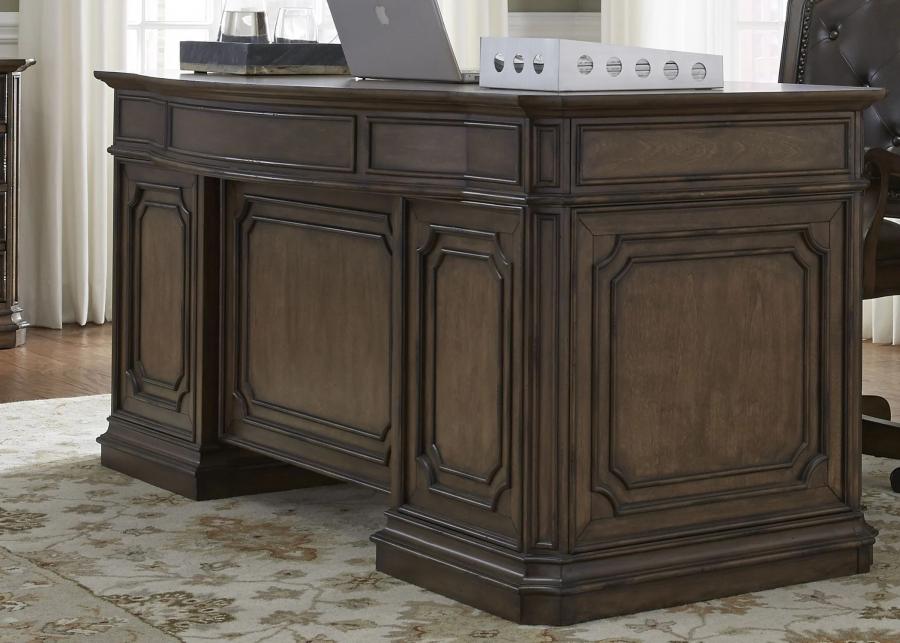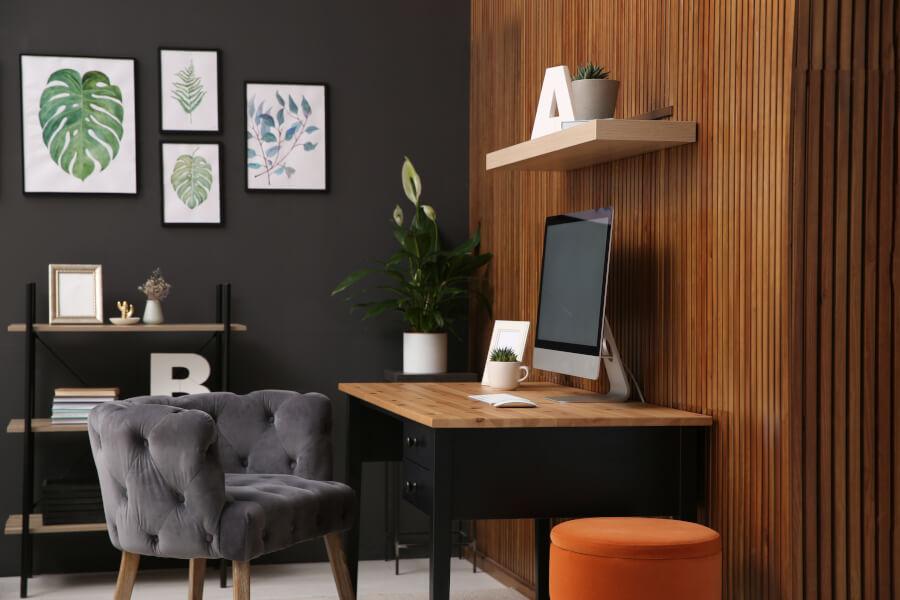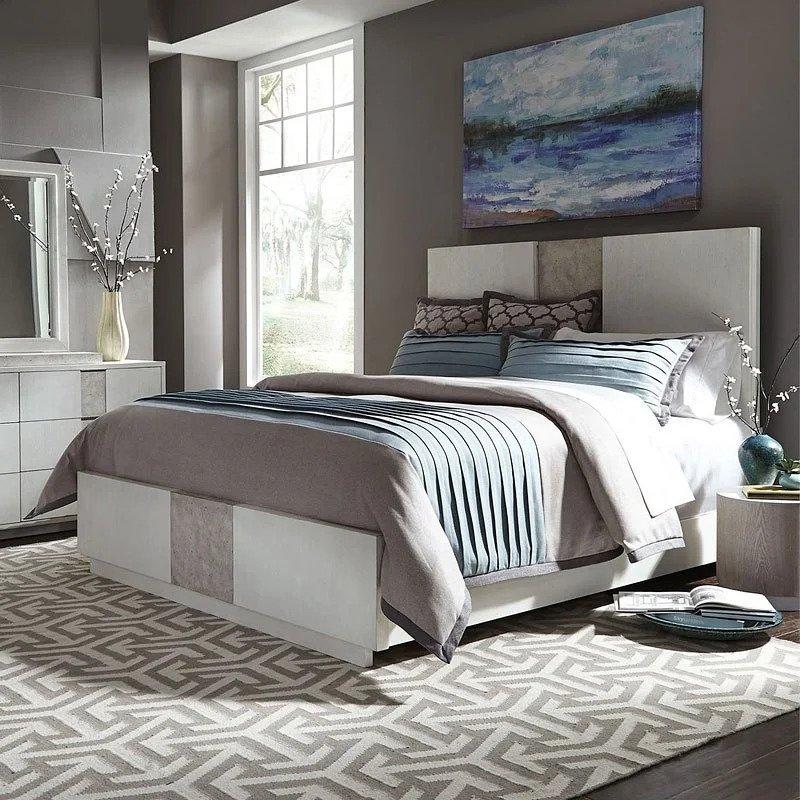
As the new year starts, we often look around our homes and feel the urge to make some changes or upgrades. And what better way to spruce things up than by incorporating the ancient practice of feng shui into our interior design plans?
Feng shui principles encourage us to create a peaceful and harmonious home environment, which can help promote well-being, prosperity, and positive energy.
We'll explore how you can use feng shui to enhance your home decor in 2024 and create a space that feels stylish and soothing.
Understanding the Basics of Feng Shui
Have you ever walked into a space and felt immediately at peace? Or conversely, have you ever walked into a room and felt uneasy or uncomfortable, even though you couldn't put your finger on why? According to the principles of feng shui, the placement and arrangement of objects in our physical environments can profoundly affect our emotional and mental well-being.
Feng shui is an ancient Chinese philosophy that seeks to harmonize individuals with their environment. It is based on the idea that our physical surroundings directly impact our health, happiness, and prosperity. Feng shui creates "good energy" or "chi" flow throughout space by balancing the placement of objects, furniture, and colors.
Key Principles of Feng Shui
Do you ever feel like your living space is chaotic or unbalanced? Feng shui might be the solution you need to create a peaceful and harmonious home. A feng shui interior design has three key principles: the bagua map, the five elements, and the yin and yang balance. We will explain each principle further in the post.
How Has Feng Shui Been Used Throughout the Years?
Feng Shui has been around for thousands of years, and it has been used in many different cultures across the globe.
Ancient China was where feng shui originated, and it was initially used as a tool to find suitable burial grounds for ancestors.
It wasn't until the Han dynasty (206 BC – 220 AD) that it started to be used for homes and living spaces, and it quickly became an important practice among the Chinese.
At this time, the Chinese believed that the environment could be used to balance yin and yang (the two opposing forces in the universe) by filling their homes and living spaces with appropriate colors, shapes, and natural elements.
Some of their beliefs included using round tables and chairs to symbolize completeness and unity, as well as placing fountains and water elements in the northeastern region of their home to promote career success.
In India, Feng Shui is known as Vastu Shastra, and it has been used for thousands of years to create harmony and balance in various aspects of life. The practice is believed to have originated in the Vedic period (1500-500 BC), and it includes natural elements such as light, air, and water in architecture, design, and spatial arrangements.
The belief system is rooted in the principles of the cosmos, the seasons, and the directions they move in. Today, the practice is still used in urban planning, home design, and architecture, making it one of India's most influential schools of design.
In Europe, Feng Shui's use has been widely adopted and incorporated into the Western interior design industry.
How is Feng Shui Relevant to Interior Design Today?
From incorporating natural lighting into homes to aligning furniture and using natural shapes and materials, Feng Shui has become a hot topic in the interior design world over the last few years.
Restaurants have started to use Feng Shui to create an atmosphere that promotes relaxation, encouraging people to stay longer and therefore spend more money. The practice is also used in commercial settings, including banks, supermarkets, and offices.
The Bagua Map: A Blueprint for Harmonious Living Spaces
The Bagua Map is an essential part of this practice as it serves as a blueprint to help you determine which areas of your home or office correspond to specific areas of your life.
Intrigued? Read on to learn more about the Bagua Map and how it can be used in Feng Shui.
What is the Bagua Map?
The Bagua Map is a diagram used in Feng Shui that represents the nine areas of life: career, wisdom, family, wealth, reputation, relationships, creativity, travel, and health.
The Map is typically divided into nine equal sections, with the bottom section representing career, the middle section representing relationships, and the top section representing wisdom or knowledge. Each section is associated with a specific element, color, shape, and number that corresponds to a specific aspect of your life. For example, the wealth section is associated with the color purple, the element of wood, and the number 4.
How is the Bagua Map Used in Feng Shui?
The Bagua Map is primarily used to determine the energy flow in a space and identify areas that may need adjustments to promote balance and harmony.
To use the Bagua Map, you need to superimpose it on the floor plan of your home or office, aligning the bottom edge of the Map with the wall that contains the main entrance.
Then, you can evaluate each section of the Map and determine if it needs to be enhanced or suppressed.
For example, if you want to improve your career, you can add a water feature or a shiny object to the career section of your space. On the other hand, if you want to reduce conflict in your relationships, you can remove any sharp or pointed objects from the relationship section of your space.
The Bagua Map can also be used to help you set intentions and create goals for different areas of your life.
Helpful tip - apps can provide you with a Bagua Map or "Compass," if you find that easier.
All in all, by focusing your attention on a specific section and incorporating the corresponding element, color, and shape into your space, you can help manifest your desires. For example, if you want to attract more wealth into your life, you could add a green plant or a wood element to the wealth section of your space.
How to Map Out a Space Using the Bagua Map
First, you need to map out the space. You can do this by drawing an overlay of the Bagua map on your floor plan. Once the floor plan has been aligned with the Bagua map, you can apply it to each section of your home.
To apply the Bagua map to each area of your home, you can focus on each of the eight life areas and apply them to the room in question. For instance, if you want to focus on wealth, you can decorate the area associated with wealth.
Similarly, if you want to focus on your career, you can apply the Bagua map to the area of your home that represents "career."
Wealth is located in the southeast area of the Bagua map. To add abundance to your home, you could place money plants or attract other elements that represent wealth, such as feng shui coins or a wealth bowl.
Health lies in the east section of the Bagua map. To promote good health in your home, incorporate healthy foods such as fruits and vegetables in your kitchen, and air-purifying plants or to banish bad chi, create a circular pathway to promote good energy flows.
The southwest section of the Bagua map represents relationships. To create a harmonious atmosphere in your home, display some artwork that depicts love or friendship in this area.
Career is represented by the north section of the Bagua map. This direction is associated with water, and you could incorporate a small fountain or aquarium to reinforce the flow of good energy in your career domain.
The Five Elements: Balancing Energy in Your Home
Interior design is an art form that goes beyond just aesthetics. It requires thoughtful consideration of various elements to create a space that is both beautiful and functional.
It is believed that incorporating the five elements of Feng Shui - wood, fire, earth, metal, and water - into the design can immensely enhance the ambiance and create a harmonious environment.
Let's take a closer look.
The 5 Elements of Feng Shui
The five elements of Feng Shui – wood, fire, earth, metal, and water – can be used to create a harmonious and balanced living space.
Wood
The element of wood represents growth and vitality. Incorporating wooden furniture, plants, or greenery, and the color green in your home can help create a sense of growth and health.
As one of the most popular ways to integrate the wood element into your home, plants not only add a natural touch but also help purify the air.
Make sure not to clutter your space with too many plants, though, as it can have the opposite effect. After all, according to expert Gail Blanke, "When we throw out the physical clutter, we clear our minds. When we throw out the mental clutter, we clear our souls."
Incorporating wood into a space can also create a feeling of comfort and warmth. Wooden floors, furniture, window frames, and doors can all infuse a sense of nature into the space.
In the dining room, a wooden table and chairs can create an inviting atmosphere that promotes family togetherness. Large potted plants or wall art made of natural wood can also provide a calming effect.
Fire
Fire represents passion and energy. Adding candles, lighting, or the color red can help bring that same energy into your home.
In the living room or bedroom, a brick or stone fireplace with flameless candles can create a warm and inviting atmosphere. Red or orange-colored furniture, artwork, or accents can also create a fiery effect.
Placing candles strategically, such as in the south area of your home, can help create a warm and inviting atmosphere. However, too much of the fire element can lead to aggression or overstimulation, so balance is key.
Earth
Earth represents stability and grounding. You can add this element through the use of natural materials such as stone, clay, and ceramics.
Pottery or earthy clay plates can be great additions to your kitchen or dining room, while boulder rocks and gravel can be used to line your garden or the pathway leading up to it. Decorate with earthy colors – think tans, yellows, and browns – to bring a sense of grounding to your space.
Natural materials such as ceramics, pottery, or stone can be used in decor accessories or tiles on walls, floors, or backsplashes. For instance, a stone wall in the living room can create a strong focal point and provide an accent to showcase art or other decor items.
Metal
The metal element represents strength and intelligence. Use metals such as silver, gold, or copper or metal-inspired decor such as mirrors, vases, picture frames, or statues. These add an elegant and sophisticated touch to any space.
Metal fixtures, such as lamps, hardware, or vases, can create a polished or industrial effect. In the kitchen, polished silver or stainless steel kitchen appliances, such as a refrigerator or oven, can create a clean and structured look. In the office, a metal desk or steel bookshelves can create a focused and productive environment.
Avoid using too much metal, though, as it can create a sterile and cold environment.
Water
Water represents flow, flexibility, and abundance. Incorporating water elements can help bring that same sense of fluidity, calm, and abundance into your home.
Water features such as fountains, aquariums, or paintings with water scenes can create a tranquil effect. Blue tiles, a shower curtain, or wall decor in the bathroom can create a serene and refreshing atmosphere. Adding a tabletop fountain or aquarium in the living room can create a peaceful and relaxing vibe.
However, too much water can lead to instability or even dampness, so use it sparingly and carefully.
Yin and Yang: Creating Balance and Harmony
In today's fast-paced world, it's easy to feel overwhelmed, stressed, and out of balance. We all lead busy lives, juggling work, family, friends, and personal responsibilities.
But what if we told you that it's possible to achieve balance and harmony, both externally and internally, by incorporating the principles of yin and yang into our daily lives and interior decorating?
Yin and yang represent two opposing energies, often characterized as feminine (yin) and masculine (yang). It's said that everything in the universe contains both elements, and balance is achieved when they are in harmony.
In feng shui, yin and yang are used to create harmony in our living environments, allowing for a peaceful and balanced existence. For example, a space that's too yang (bright, high-energy, and active) can be balanced through the addition of yin elements (soft lighting, muted colors, and natural textures).
The concept of yin and yang is not only used in feng shui but also in Traditional Chinese Medicine, where it's used to diagnose and treat illnesses. It's said that when our yin and yang energies are out of balance, it can lead to physical and emotional ailments.
For example, an excess of yang energy can lead to high blood pressure, anxiety, and restlessness, while a lack of yin energy can lead to fatigue, depression, and cold hands and feet.
Incorporating the principles of yin and yang into our daily lives can help us achieve balance and harmony. There are a few ways to do so, but the easiest way is through your interior design.
How Can Yin and Yang Be Applied to Interior Design?
Finding balance and harmony in our living spaces has become an essential part of our daily lives. We want our homes to be a sanctuary where we can relax and recharge after a long day.
The concept of yin and yang, originating from Chinese philosophy, can be applied to interior design to create a space that is balanced and harmonious.
Color
Colors play a huge role in interior design; they can either create a soothing or energizing environment.
Yin colors include black, blue, green, and white, while yang colors include red, orange, purple, and yellow. You can balance the two by pairing dark yin colors with light yang colors.
For example, you can pair black furniture with yellow or red accents. Alternatively, you can opt for a monochromatic scheme using a variety of shades of one color, which gives off a predominantly yin or yang feel to the space.
Furniture
Furniture can also be used to create a balance between yin and yang. Yin furniture has curves, is plush, and is low to the ground, promoting relaxation and comfort. In contrast, yang furniture is contemporary, modern, and has straight edges.
Using furniture that is a balance of yin and yang creates an inviting, comfortable living space. Consider mixing a modern sofa with more eclectic pillows.
Texture
Incorporating different textures is an excellent way to create depth in design. Yin textures are smooth and plush (e.g., silk, cotton, or velvet), while Yang textures are rough and hard (e.g., metal or concrete). You can achieve balance by using a mix of soft materials, such as silk curtains with a concrete accent wall or a plush rug on a hardwood floor.
Lighting
Lighting is another essential element in creating a harmonious and balanced room. Yin lighting is soft, dim, and indirect lighting typical of ambient lighting, such as table lamps and floor lamps.
Alternatively, yang lighting is bright and direct, such as ceiling-mounted lights. The space creates a natural and cozy atmosphere with adequate lighting when combining yin and yang lighting.
Try using pendant lights with a dimmer switch that is easy to adjust between yin and yang modes.
Nature
Last but not least, nature promotes balance and harmony in interior design. Allowing natural light to enter the room and adding plants or greenery produces an inviting and soothing environment.
To balance yin and yang, incorporate live green plants into the space, such as snake plants or bamboo palms. Another option is using nature-inspired wallpaper or art, bringing the essence of the outdoors inside.
How to Balance Yin and Yang in Different Rooms of the Home
In interior design, the principle of yin and yang can be applied by balancing different elements and energies in each room of the home. So, whether you're trying to zen out your bedroom or energize your workspace, keep reading for some tips on how to balance yin and yang in different rooms of your home.
Bedroom
The first room that we will talk about is the bedroom. This is where we go to rest, relax, and rejuvenate. To incorporate yin and yang principles into the bedroom, consider combining soft textures (like plush throw pillows and cozy blankets) with harder textures (like a solid wood bed frame or a metal lamp).
To create a sense of calm and tranquility, use calming colors like blue or green, and avoid bright or bold colors that may be too stimulating. For example, you might choose a light blue comforter to promote restful sleep.
Living Room
Moving on to the living room, which tends to be the home's central hub - this is where we entertain guests and spend quality time with family.
To balance yin and yang in your living room, try including some statement pieces that are bold and dramatic, like a sleek leather couch or a statement wall piece.
Incorporate warm colors like orange, red, or yellow to create a sense of warmth and hospitality. You might also consider a soft rug to create a cozy space for people to gather around.
Kitchen
Next up, let's take a look at the kitchen, which is where we nourish ourselves and others. In this zone, it's important to create an environment that's both functional and aesthetically pleasing.
Consider incorporating natural materials, like wood, stone, or marble, for a sense of warmth and harmony. To balance the energy of the kitchen, incorporate plants or fresh flowers to bring nature inside. You can also add elements of fire, like a gas stove or a statement backsplash, which can add balance and harmony.
Workspaces
Finally, the workspace, which is where we go to be productive and get things done, requires us to balance yin and yang differently. Here, it's important to create an environment that's both stimulating and calming.
Use warm colors like yellow and orange for energy and enthusiasm, but also incorporate calming elements like soft lighting, a comfortable chair, or a rug that feels good on your feet. You can also add elements of nature (like a small plant or a vase of flowers), which can help inspire creativity and improve focus.
General Tips for Feng Shui Throughout the Home
The placement of your furniture can significantly impact your home's feng shui. Avoid placing furniture with sharp angles towards doorways or walkways, as this can create a hostile environment.
As Jonas Eriksson said, "My view on feng shui: don't put your bed in front of the door because you won't get it." Be smart about things! Instead, arrange furniture to encourage open communication and allow for easy movement.
Remember that each item in your home should have a specific purpose and meaning. Choose artwork, furniture, and decor items that inspire you and make you feel positive. Colors play a big role in feng shui, so choose shades that promote the energy you want to cultivate in a room.
And most importantly, eliminate clutter. Clutter can disrupt the energy flow in your home and make it feel chaotic and disorganized. Author Annette Kurtz writes, "A space-clearing ceremony fast tracks the process of making your house feel like your home."
Go through your home room by room and get rid of anything that you no longer need or love. Keep surfaces clean and organized to allow for an uninterrupted flow of energy.
Feng Shui and Your Health: The Mind-Body Connection
When we think about feng shui, we often associate it with decluttering our spaces and creating harmony in our homes. However, did you know that feng shui and your health are also interconnected? Experts say that feng shui can greatly impact not only our physical well-being but also our mental health.
Again, feng shui is centered on the principle of qi, or the energy flow that permeates everything in our environment, including ourselves. When there's a blockage in the flow of qi, negative energy, or sha, can accumulate and affect our physical and emotional states. Feng shui aims to unblock these energy pathways and achieve balance and harmony within our surroundings.
One way feng shui can impact our health is by reducing clutter. A cluttered space can affect our mood and increase stress levels, which can lead to health problems in the long run. By cleaning up our space and getting rid of any unnecessary items, we allow for the free flow of energy, which can improve our sense of well-being.
Improving air quality is also crucial to our health, and feng shui can help. Indoor air pollution can cause respiratory problems, allergies, and other health issues. To improve air quality, feng shui experts suggest using air-purifying plants such as spider plants, peace lilies, and aloe vera. Regularly opening windows and allowing air to circulate can also be beneficial.
Our homes' color scheme and decor can also affect our mood and well-being. Colors such as blue and green can have a calming effect, while red and orange can stimulate energy and passion. Feng shui experts recommend choosing colors based on the desired mood for each room. Incorporating elements such as water, wood, and earth can create a balanced and harmonious space.
Finally, our sleeping environment is crucial to our health, and feng shui can also play a role here. Experts suggest placing the head of our bed against a solid wall, as it creates a sense of stability and grounding. Soft, natural fabrics such as cotton, linen, and silk can create a more comfortable and relaxing sleeping environment.
Conclusion
Incorporating feng shui in your interior design scheme can help create harmony in your home in 2024 and beyond. Engaging with the principles of these practices may greatly impact your physical and mental well-being, making your home a safe, peaceful, and aesthetically pleasing sanctuary. From balancing the energies in specific rooms to creating comfort through attractive, calming design elements and textures, the potential benefits of engaging with this ancient philosophy are numerous.
Whether you are just starting out or already an experienced practitioner, there is always something more to discover about cultivating and maintaining harmonious energy in your home for years to come. And remember, according to Stefan Edmunds, "Always keep in mind that the strongest factor of your Feng Shui is you."

